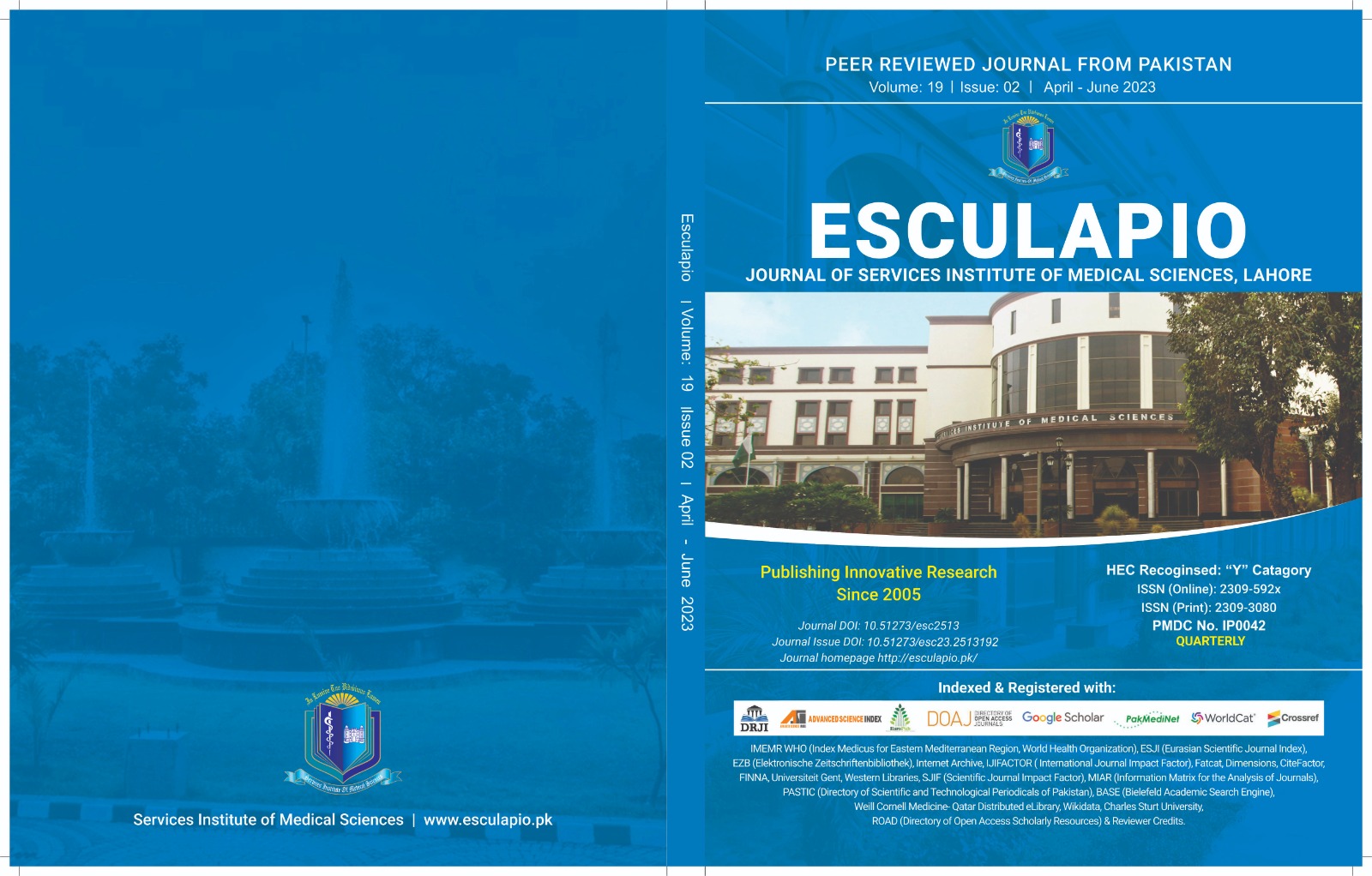Impact of Active Learning Approach on Students Evaluation of Teaching
DOI:
https://doi.org/10.51273/esc23.2519222Keywords:
Active Learning, SET, Powerpoint, WhiteboardAbstract
Objective: The present study was designed to evaluate the extent to which students were benefited from active learning approach of teaching. It was intended to check the usefulness of whiteboard as a teaching medium instead of more commonly used audio-visual aids like PowerPoint.
Method: It is a cross-sectional descriptive questionnaire-based study. Interactive teaching strategy was used instead of diagnostic lecture. Instructor used only whiteboard as a teaching medium encouraging interactivity. At the end of the session, 150 students filled the form which comprised of 12 statements regarding evaluation of the instructor. Students were supposed to respond to them according to 5-point Likertscale. Only students≥18 Years and those willing to fill the form were included in the study. Exclusion criteria included students not willing to fill the form and those returning incompletely filled forms. The reliability of form was checked using Cronbach's Alpha which came out to be 0.8 proving it to be reliable.
Results: The average overall score for the proforma was 54.5±3.901 out of 60. This showed that there was more positive perception about the instructor than negative after employing active learning approach.
Conclusion: From the results of thisstudy, it can be concluded that active learning approach using whiteboard along with enhanced student interactivity is an effective way of teaching
References
Web site Available at: http://www.crlt.umich.edu/resources/evaluation-teaching Cited on 6th December 2022
H. Dodeen, “College students’ evaluation of effective teaching: developing an instrument and assessing its psychometric properties,” Research in Higher Education Journal, vol. 21, 2013.
Badyal DK, Bala S, Kathuria P. Student evaluation of teaching and assessment methods in pharmacology. Indian Journal of Pharmacology. 2010;42(2):86.
Nazir M, Al-Ansari A, AlKhalifa K, Gaffar B, AlHumaid J. Use of student evaluation of teaching (SET) survey to evaluate effectiveness of teaching in a leadership course among dental students over three years. The Scientific World Journal. 2020:1–8. . https://doi.org/10.1155/2020/6436102
Clayson DE. Student evaluation of teaching and matters of reliability. Assessment & Evaluation in Higher Education. 2017;43(4):666–81. https://doi.org/10.1080/02602938.2017.1393495
Jahangiri L, Mucciolo TW, Choi M, Spielman AI. Assessment of teaching effectiveness in U.S. dental schools and the value of triangulation. Journal of Dental Education. 2008;72(6):707–18.
Stewart M. Understanding learning: Theories and critique. University Teaching in Focus. 2012;:3–20.
Joshi A. Evaluation of students’ perceptions towards an innovative teaching-learning method during pharmacology revision classes: Autobiography of drugs. Journal Of Clinical and Diagnostic Research. 2015;9(7):01-4. https://doi.org/10.7860/JCDR/2015/12775.6153
David A. Asch MD, and Debra F. Weinstein, M.D. Innovation in Medical Education, N Engl J Med 2014; 371(9):794-5.
Vare VA, Kurle DG, Bagle TR, Hire RC, Shukla AO. Evaluation of teaching methods in pharmacology among MBBS students. Int J Basic Clin Pharmacol 2017;6:1352-7. http://dx.doi.org/10.18203/2319-2003.ijbcp20172016
Roff S, McAleer S, Harden RM, Al-Qahtani M, Ahmed AU, Deza H, et al. Development and validation of the Dundee Ready Education Environment Measure (Dreem). Medical Teacher. 1997;19(4):295–9.
Roff S. The Dundee Ready Educational Environment Measure (dreem)—a generic instrument for measuring students’ perceptions of undergraduate health professions curricula. Medical Teacher. 2005;27(4):322–5.
.Likert, R. A technique for the measurement of attitudes. Archives of Psychology, 1932;22(140), 1–55.
Nunnally J. Psychometric Theory. New York: McGraw-Hill; 1978.
Cohen, P. A. Student ratings of instruction and student achievement: A meta-analysis of multi-section validity studies. Review of Educational Research, 1981;51(3), 281–309.
Benton, S. L., & Cashin, W. E. Student ratings of teaching: A summary of research and literature. IDEA Center Kansas State University 2012;1–19.
Bob Uttl CAW, Daniela Wong Gonzalez. Meta-analysis of faculty's teaching effectiveness: Student evaluation of teaching ratings and student learning are not related. Studies in Educational Evaluation 2016;54(2017):22–42.
Constantinou C, Wijnen-Meijer M. Student evaluations of teaching and the development of a comprehensive measure of teaching effectiveness for medical schools. BMC Med Educ. 2022 Feb 19;22(1):113. https://doi.org/10.1186/s12909-022-03148-6.
Bhowmick K, Mukhopadhyay M, Chakraborty S, Sen PK, Chakraborty I. Assessment of perception of First Professional MBBS students in India about a teaching learning activity in biochemistry. South-East Asian Journal of Medical Education. 2009;3(2):27.
H. W. Marsh, “Students’ evaluations of university teaching: dimensionality, reliability, validity, potential biases and usefulness,” in The Scholarship of Teaching and Learning in Higher Education: An Evidence-Based Perspective, pp. 319–383, Springer, Berlin, Germany, 2007.
Murray D, Boothby C, Zhao H, Minik V, Bérubé N, Larivière V, et al. Exploring the personal and professional factors associated with student evaluations of tenure-track faculty. PLOS ONE. 2020;15(6): e0233515 https://doi.org/10.1371/journal.pone.0233515
Spooren P, Van Loon F. Who participates (not)? A non-response analysis on students' evaluations of teaching. Procedia - Soc Behavioural Sci. 2012;69:990–996.
McGowan, W. R., & Graham, C. R. Factors contributing to improved teaching performance. Innovative Higher Education, 2009;34:161-171.
Tikoo D, Gupta M, Geeta S. Student feedback on teaching-learning methodology and evaluation methods in pharmacology. Int J Basic Clin Pharmacol 2015;4:1260-6.
Shreemanta K. D, Shubhransu P, Basanta K. B. Teaching Methods and Its Efficacy An Evaluation by the Students. J Indian Acad Forensic Med. 2013; 35(4):331-334.
Bob Uttl CAW, Daniela Wong Gonzalez. Meta-analysis of faculty's teaching effectiveness: Student evaluation of teaching ratings and student learning are not related. Studies in Educational Evaluation 2016;54(17):22–42.
Sharan B. Merriam Andragogy and Self-Directed Learning: Pillars of Adult Learning Theory. The Update on Adult Learning Theory 2001;(89):3-14.










